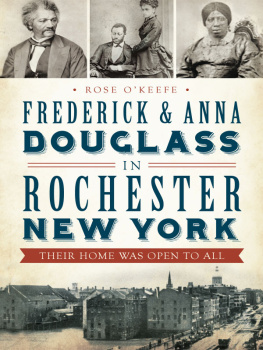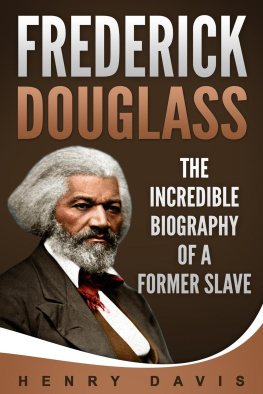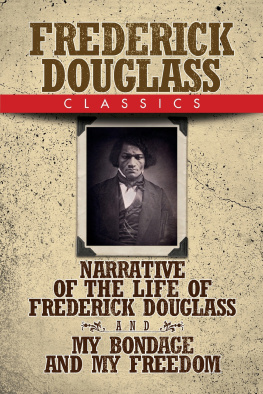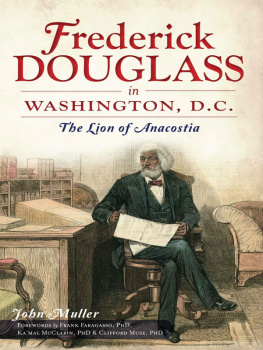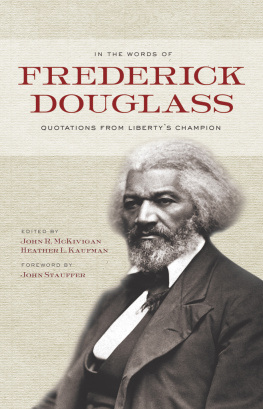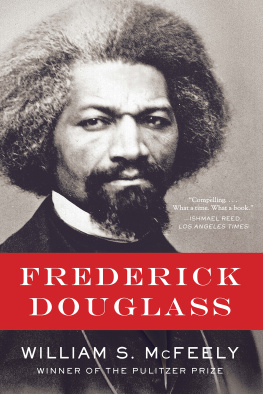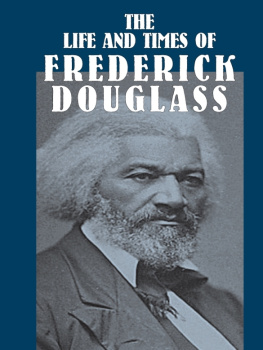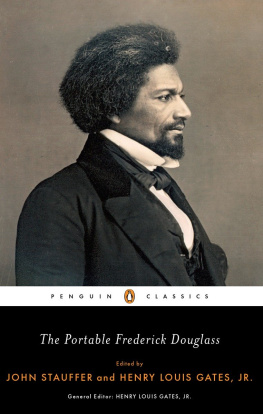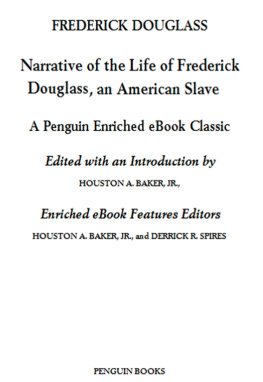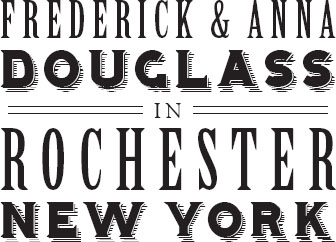

Published by The History Press
Charleston, SC 29403
www.historypress.net
Copyright 2013 by Rose OKeefe
All rights reserved
Cover image: Frederick Douglass. Library of Congress.
First published 2013
e-book edition 2013
ISBN 978.1.62584.639.6
Library of Congress CIP data applied for.
print edition ISBN 978.1.62619.181.5
Notice: The information in this book is true and complete to the best of our knowledge. It is offered without guarantee on the part of the author or The History Press. The author and The History Press disclaim all liability in connection with the use of this book.
All rights reserved. No part of this book may be reproduced or transmitted in any form whatsoever without prior written permission from the publisher except in the case of brief quotations embodied in critical articles and reviews.
I consider the authors whose works I read for this project to be true friends. All have their own slants and contributions to understanding a fuller picturein particular, Dickson J. Preston in Young Frederick Douglass; Peter Burchard in Frederick Douglass: For the Great Family of Man; and The Frederick Douglass Papers series, edited by John Blassingame, John McKivigan and Peter Hanks. Thank you to all of them and to their many helpers behind the scenes.
Contents
Acknowledgements
This book could not have been written without the help of services and individuals, including:
Rochester Public Library, especially the Local History Division at the downtown public library
Curator Lea Kemp at the Rochester Museum and Science Center
Local history authors Ruth Rosenberg-Naparsteck and Emerson Klees
Curator Kamil McClarin at the Frederick Douglass National Park
Whistle Stop Writers group
Consultant Lonna Cosmano
Curator Bill Keeler at the Rochester Historical Society
Very special thanks go to retired University of Rochester archivist Karl Kabelac for his invaluable support.
Introduction
Frederick and Anna Douglass in Rochester, New York shares the personal side of one of the most famous public and political men of the 1800s: Frederick Douglass. My quest to uncover more about his family began about ten years ago, when a man sitting in the local history section of the downtown Rochester Public Library noticed what I was readingany one of the noncirculating Douglass biographies. He told me that some of the Douglass children had attended 13 School on Gregory Street in Rochester (which happens to be my neighborhood).
That comment started my search to learn everything I could about the Douglass family. Although researchers have devoted decades to cataloguing five thousand pieces of his public writings, speeches and travels in the marvelous series The Frederick Douglass Papers, details about the family are much harder to come by. Personal tidbits were shared only with close friends.
In his first autobiography, Narrative of the Life of Frederick Douglass, Douglass wrote about the harshness of slave life and how he came to flee to New York City. I am grateful that his early years in Maryland have been well described by Dickson J. Preston in Young Frederick Douglass and Peter Burchard in Frederick Douglass: For the Great Family of Man. Douglass retells his story more accurately in his second autobiography, My Bondage and My Freedom, which describes his early years up to fleeing to New York City and moving to New Bedford, Massachusetts.
Both autobiographies and biographies give a clear view of his early years but much less of the decades when Frederick and Annas children were young. This book aims to fill in the gaps in their family history with information and vintage images of their twenty-five years in Rochester, New York.
Despite living through one of our nations most bitter and terrifying times, Frederick and Anna raised five children in loving homes with flower, fruit and vegetable gardens. Their house was open to fugitives, visitors and houseguests who stayed for weeks, months and years at a time. Their grown children moved back into their parents house when jobs were scarce both in Rochester and later in Washington, D.C. All of these comings and goings went on while Anna, whose health was weak after five children, stayed home and Frederick traveled.
I gleaned details about the familys life from several biographies, scholarly endnotes in the autobiographies and correspondence series and family letters, as well as from what their daughter, Rosetta Douglass Sprague, wrote in the early 1900s. She said that her fathers story had already been well told, but her mothers had not. All have contributed to this portrait of the Douglass family and how they came to call Rochester, New York, their home for twenty-five years.
Chapter 1
Tuckahoe, Maryland, to New York City
After slavery was abolished in Maryland in November 1864, Frederick Douglass returned to Fells Point in Baltimore for the first time since 1838, when, at age twenty, he had escaped from that city. In the years since he fled, he had traveled widely in the United States and the British Isles, but it is unlikely he could have foreseen living in Rochester, New Yorklet alone for twenty-five years. He always remained a Marylander and a proud Eastern Shoreman at heart but came to call Rochester his home and chose to be buried there.
Narrative of the Life of Frederick Douglass, An American Slave, Written by Himself, his first autobiography, begins simply: I was born in Tuckahoe, near Hillsborough, and about twelve miles from Easton, in Talbot county, Maryland. I have no accurate knowledge of my age, never having seen any authentic record containing it. Fredericks birth name was Frederick Augustus Washington Bailey, and he was called Freddy Bailey.
In his second book, My Bondage and My Freedom, Douglass described Tuckahoe as a drab and dreary neighborhood, surrounded by poor whites. He guessed at the origin of the name Tuckahoe without knowing it came from the Algonquin word for root or mushroom.
He said his mother, Harriet Bailey, the daughter of Isaac and Betsey Bailey, was darker in color than either of her parents. That his father was white was common knowledge; that his father was his master, Aaron Anthony, or Captain Anthony, was hinted at. Since he and his mother had little time together, he barely knew or remembered her.
HISTORICAL MARKER
Frederick Douglass Abolitionist/Orator/Author
Frederick Douglass was born into American slavery on Marylands Eastern Shore in February 1818. In March 1826, Douglass, a slave child, was sent to live in the Hugh Auld household at this location, from 18261831.
Aunt Betsey, as his grandmother was called, raised dozens of children whose mothers labored in distant fields. Despite living in an old windowless log cabin with a clay floor and dirt chimney, the cabin was a haven for children like Freddy. Aunt Betsey delighted in having the children, mostly of her own daughters, around her. The daughters were Jenny, Esther, Milly, Priscilla and Harriet. For much of the first seven years of his life, Freddy wore only a long shirt and had no possessions. Even so, if he stayed away from tough older boys, he was as happy as could be.
HISTORICAL MARKERS
Douglass periodically resided in Fells Point as a slave until Monday, September 3, 1838, when he escaped to freedom via the Underground Railroad. Douglass returned to Baltimore as a free man on May 19, 1870 to address the 20,000 participants in the 15th Amendment Celebration and Parade
Next page
